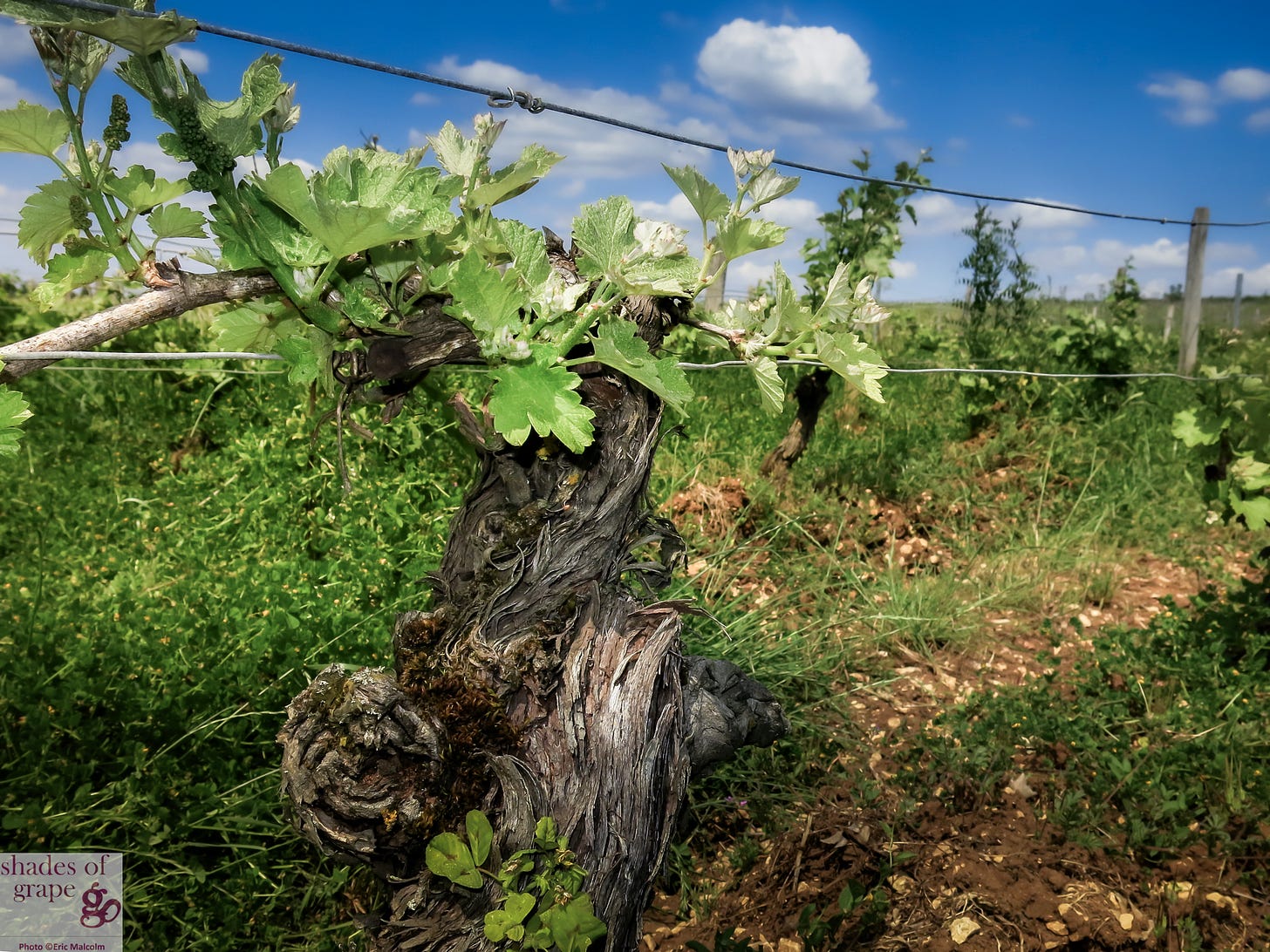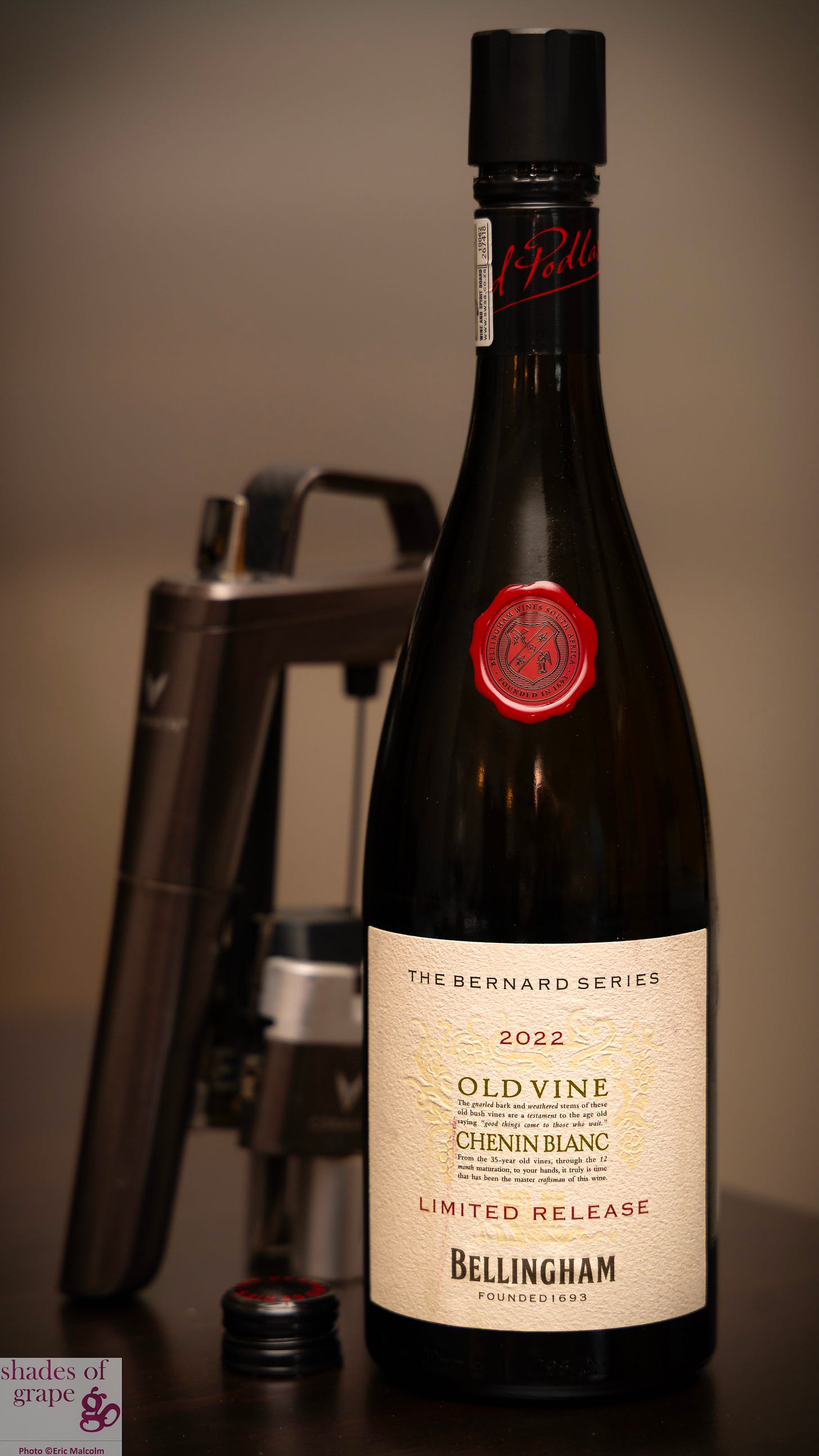Meet Chenin - the Overachiever of the Grape World:
- chenin blanc's endless possibilities - the grape that keeps on giving
I love helping people discover the wines they love — if you're in Alberta, let's connect! I am looking to supply our wines to Edmonton!
Thanks to all the paid subscribers for their support! This funding helps cover the costs involved in creating these weekly articles!
Appreciate my wine recommendations? Enjoy my personal wine curation service? Consider upgrading to a paid subscription! Help me continue sharing the world of wine with you.
You may recall my article on South Africa.
The one where Jan van Riebeeck from the Dutch East India Company set up a refreshment station in the 1650s for trade from East India to the European market?
Yes.
A short time after his arrival to the Cape of Good Hope, van Riebeeck brought in European grape vine cuttings to make wine. One of those grape varieties is believed to have been Chenin Blanc, which has become South Africa’s top growing grape.
I thought Chenin Blanc was a grape from Loire, France. Why are you focusing on South Africa?
Because based on 2020 stats, South Africa has twice as many Chenin plantings as France. This is a stat that has been consistent for 20 years.
But you are right. Chenin, as it is often abbreviated, was first referenced in the year 845 in the Anjou region of the Loire Valley, France. It was named after Mont Chenin in the Touraine region to the east of Anjou.
Chenin is appreciated by producers for its high acidity, its ability to produce high yields, and for being a tough vine with good resistance to disease and wind. These three elements make it economically easier to grow than a dainty grape such as the Diva of all grapes, Pinot Noir.
Why would acidity make it easier to grow?
You may remember the article on Arneis, a grape whose acidity drops very quickly during ripening. As discussed in that article, wineries go to great lengths to produce Arneis wines that have enough acidity. This can be accomplished by blending wines from grapes picked at different ripeness levels or from different vineyards with different growing conditions. A grape that retains its acidity is easier to grow because it requires less time, effort, and attention.
Chenin has been referred to as the world’s most versatile grape. It can produce wines of varying sweetness from bone dry to full on sweet – again because of its acidity, which is necessary to produce balanced sweet wines.
Isn’t Chenin one of those varieties that ripens unevenly?
Indeed. This allows for diverse sugar levels in the grape bunches at harvest time, again contributing to the ability to make a range of styles. This includes sparkling wines which require high acidity and lower alcohol levels (achieved from less ripe grapes).
Again, this is a great advantage for wineries. It allows versatility to make different wines depending on what they are trying to achieve for a given growing season, or to adapt to changes in consumer market demands.
Chenin wines are also worthy of ageing due to Chenin’s acidity, aroma and flavor intensity, as well as sugar in the case of sweet (or sweeter) wines. These are all characteristics that give wines the ability to age.
Man, this is the grape that keeps on giving!
Yup, so many great things to say about this grape.
But everything has a dark side.
True.
I mentioned that Chenin is a high productivity grape. This can be good for growers because if they have a setback, they may be able to salvage sufficient grapes to have a successful harvest. This can be critical in a cooler climate like the Loire Valley, where Chenin, as an early budding grape, can be vulnerable to crop losses due to spring freeze.
But this also means Chenin can produce very high yields. As you learned here, this means producers can produce low quality wines with no character and diluted flavors. This is what happened to Chenin in California in the 1980s. They grew copious amount of Chenin Blanc in the hot, dry Central Valley to produce jug wine – inexpensive wines usually with more sugar and blended with other high producing grape varieties.
The featured wine comes from Bellingham winery in South Africa, whose original name was “Belle-en-champ”, meaning pretty fields. It was founded by Gerrit Janz van Vuuren, from Holland, and his French Huguenot wife in 1693.
Wow – that is a winery with history!
I have had many vintages of this wine, and it never disappoints. This vintage has undergone some lees ageing, which means that after fermentation the yeast that has now done its job is left in contact with the wine. This provides the wine some dairy and cream flavors and texture. This wine also spent some time in oak barrels, which gives it even more complexity of flavor in addition to texture.
Sounds delicious!
Enjoying my recommendations? Consider upgrading to a paid subscription.
Bellingham Bernard Series Old Vine Chenin Blanc 2022 from South Africa
Style: Aromatic medium body white wine
Varieties: 100% Chenin Blanc
This complex wine has a myriad of citrus flavors (lime, lime rind, lemon, lemon meringue) green apple strudel, a hint of bruised apple, with the second day showing nectarine and orange creamsicle notes. It has the additional complexity of flint, cedar, wet stones, cream, and yogurt. This wine has moderately high intensity, great oak integration, completed by a persistent finish.
Best pairings: Fish and shellfish served with stone fruit or mango salsa, Poultry served with tangy rich sauce, Salad with citrus vinaigrette, and Cheese: Brie and Goat Cheese
Serving Temperature: 12-14 degrees Celsius
Serving Tips: Enjoy
Price: $29 Cdn
If you're in Alberta and want a one-on-one wine curation experience, please reach out! I am looking to supply our wines to Edmonton!
A huge thank you to my paid subscribers—your support helps cover the costs of creating these weekly articles.
Love my wine recommendations? Enjoy my personal wine curation service? If you find value in my writing, consider upgrading to a paid subscription to help me keep sharing the world of wine with you!
I have compiled all my wine recommendations in one place. I will do my best to keep this up to date. I also include the link(s) to the article in which the wine was featured.
Like what you are reading? Click on the ❤ to let me know it resonated with you!
SOURCES:
About: Our story. Home. (n.d.). https://www.bellinghamwines.com/pages/our-story
Harding, J. and Robinson, J. (2023) The oxford companion to wine. Oxford, United Kingdom: Oxford University Press.
History of chenin: Chenin Blanc Association. chenin. (n.d.). https://www.chenin.co.za/history-of-chenin
Jamiegoode. (2024, February 12). Bellingham: An important winery in South Africa spanning fine wine to lower-priced offerings. wineanorak.com. https://wineanorak.com/2024/02/12/bellingham-an-important-winery-in-south-africa-spanning-fine-wine-to-lower-priced-offerings/
MacNeil, K. (2022) The wine bible. New York, NY: Workman Publishing.
Vinsdeloire. (n.d.). https://www.vinsdeloire.fr/sites/interloire/files/2024-10/gs-gi-0203-carte-pro-sept-2024-english-v2.pdf
Wine & Spirit Education Trust (2021) D3: Wines of the World - An accompaniment to the WSET Level 4 Diploma in Wines. Version 1.2. London: Wine & Spirit Education Trust.





I've tried some excellent Chenin Blancs from South Africa: Reynekes, Catherine Marshall and Mullinieux Schist. Will be on the lookout for the wine you recommended and see if I can get it from Singapore!
Chenin developed a reputation for producing rather insipid dry whites in Australia, where it was grown mainly in hotter regions. Over more recent decades more winemakers are taking this variety more seriously, a bit more care in the vineyard, a bit more skin contact to give the wine some flavour and firmness. Savvy Aussie consumers are starting to take notice.